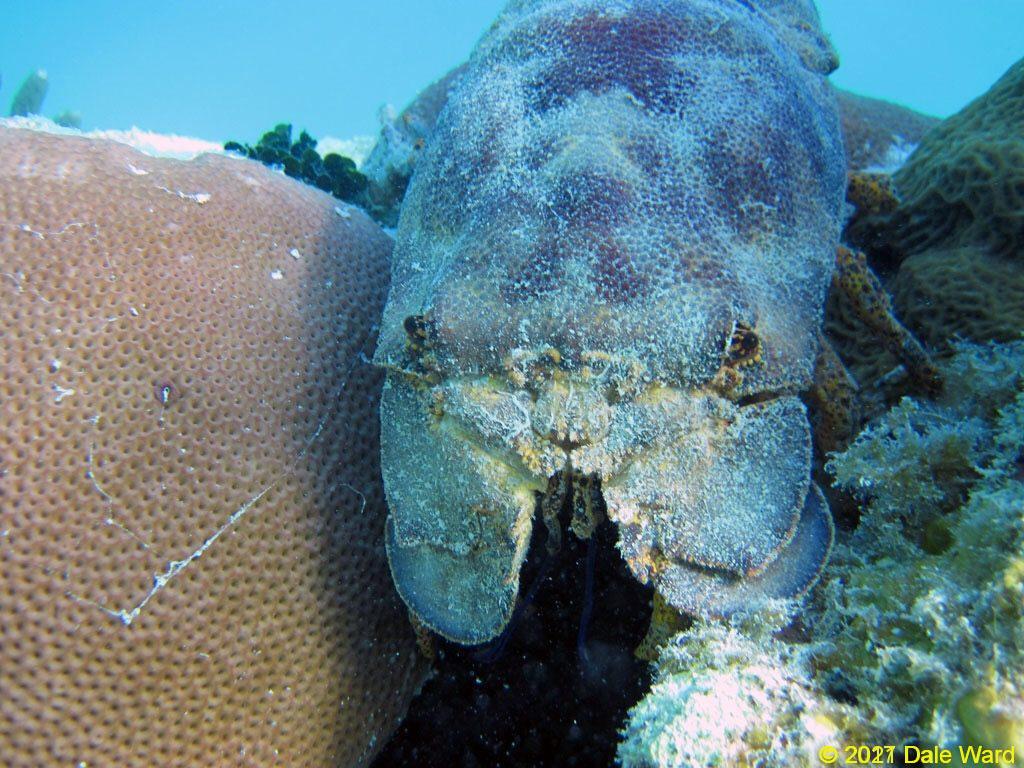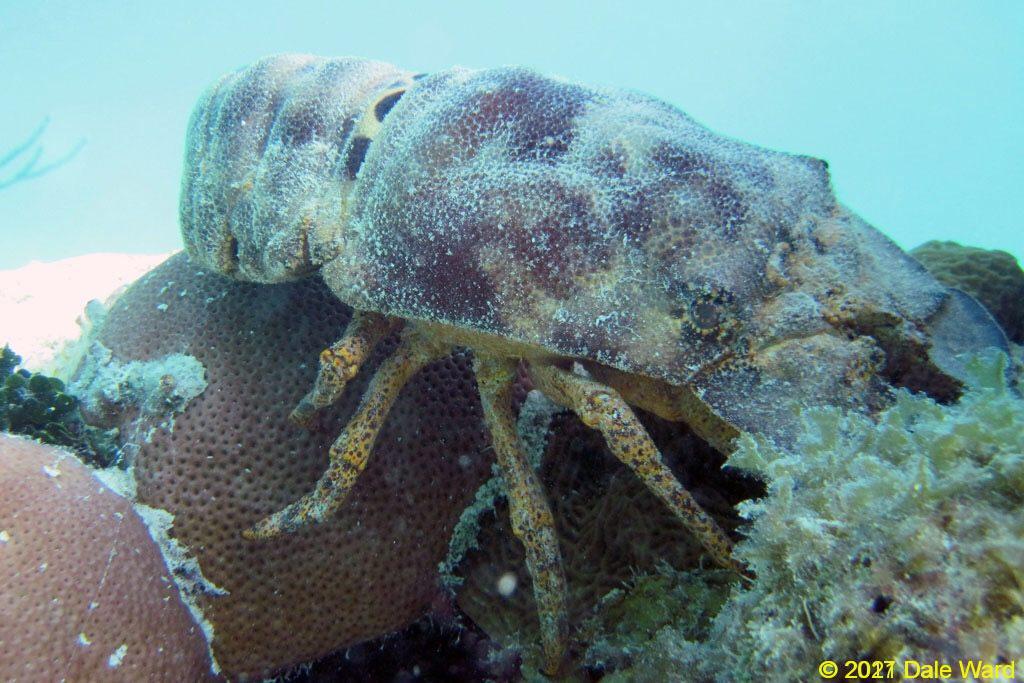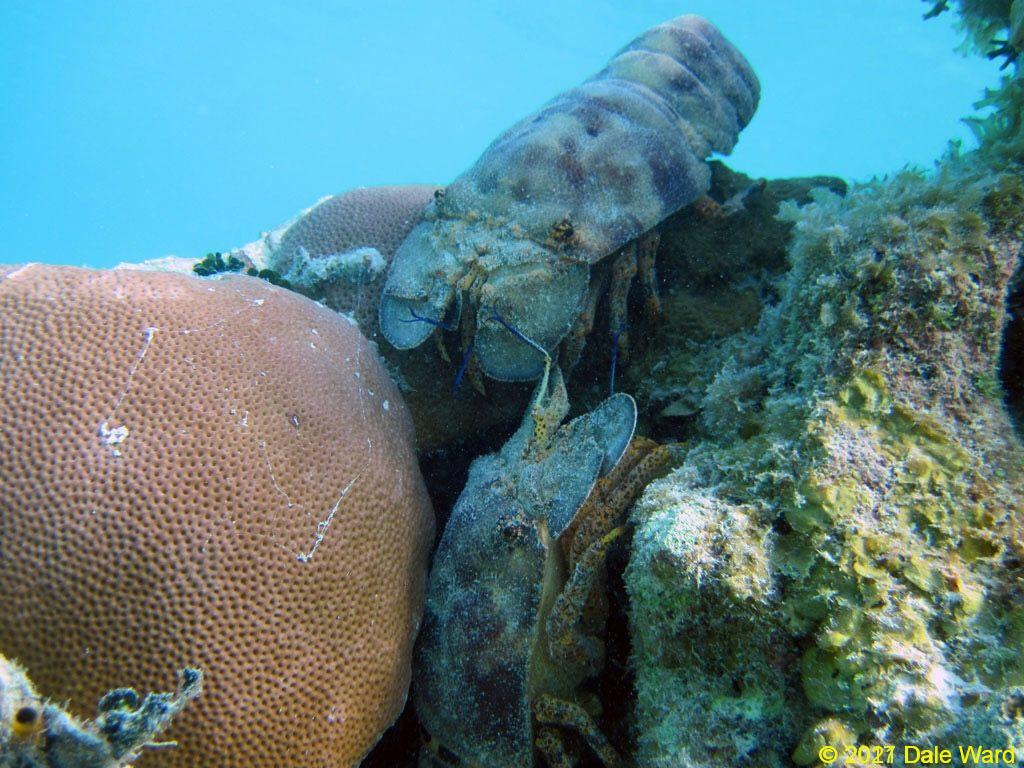Slipper Lobster
Thoughts while looking at Slipper Lobsters in Belize
 Slipper Lobster facing the camera. The large, flat protrusions are modified antennae. The small black dots just above the antennae are eyes.
Slipper Lobster facing the camera. The large, flat protrusions are modified antennae. The small black dots just above the antennae are eyes.
When I was young, I had a game that I liked to play using field guides. I would imagine that I had a large aquarium or terrarium. The tank would be about the size of a room, so there would be plenty of space in it.
The rules were that I’d open the field guide at random. Then I could pick one creature from the pages I had opened and put that creature in my imaginary tank.
I think I know what you are thinking. Yes, you’re right, this was indeed a very manly game, and not geeky at all.
One of the invertebrates that I almost always included in my imaginary aquarium was a Slipper Lobster.
They seemed so wonderfully bizarre, exotic and tank-like. I was fascinated by the lobsters, but never thought that I would actually see one.
Many years later, while snorkeling in Belize, I came across two Slipper Lobsters that were arguing with each other. They were larger than I had imagined they would be, each was about 8 inches or so long.
It was like seeing old childhood friends. Pen-pals with whom I’d corresponded, but never actually met.
 Three-quarter view of the interloping Slipper Lobster. Its head is on the right side of this photo.
Three-quarter view of the interloping Slipper Lobster. Its head is on the right side of this photo.
One of the Lobsters was crossing a piece of coral, and the other had wedged itself into a crevice. The one in the crevice would dart out at the other Lobster, then retreat back to its crevice. Sort of a series of Lobster-lunges.
 Two Slipper Lobsters argue. The one in the crevice came out and chased the interloper away.
Two Slipper Lobsters argue. The one in the crevice came out and chased the interloper away.
I watched them for about five minutes. Eventually the Lunging Lobster, the one I was thinking of as the resident, chased the interloper away.
 The Slipper Lobster near the center of the picture scuttles away
The Slipper Lobster near the center of the picture scuttles away
I’m not sure exactly what was going on here. I had heard that these guys were mostly nocturnal. I’ve read that males roam at certain times of the year, looking for females. Sort of in the same way that Tarantula males roam.
I suspect that the roaming lobster might have been a male, and the resident was either another male or a non-receptive female.
But I really don’t know for sure. I do know that this was a pretty cool thing to see.